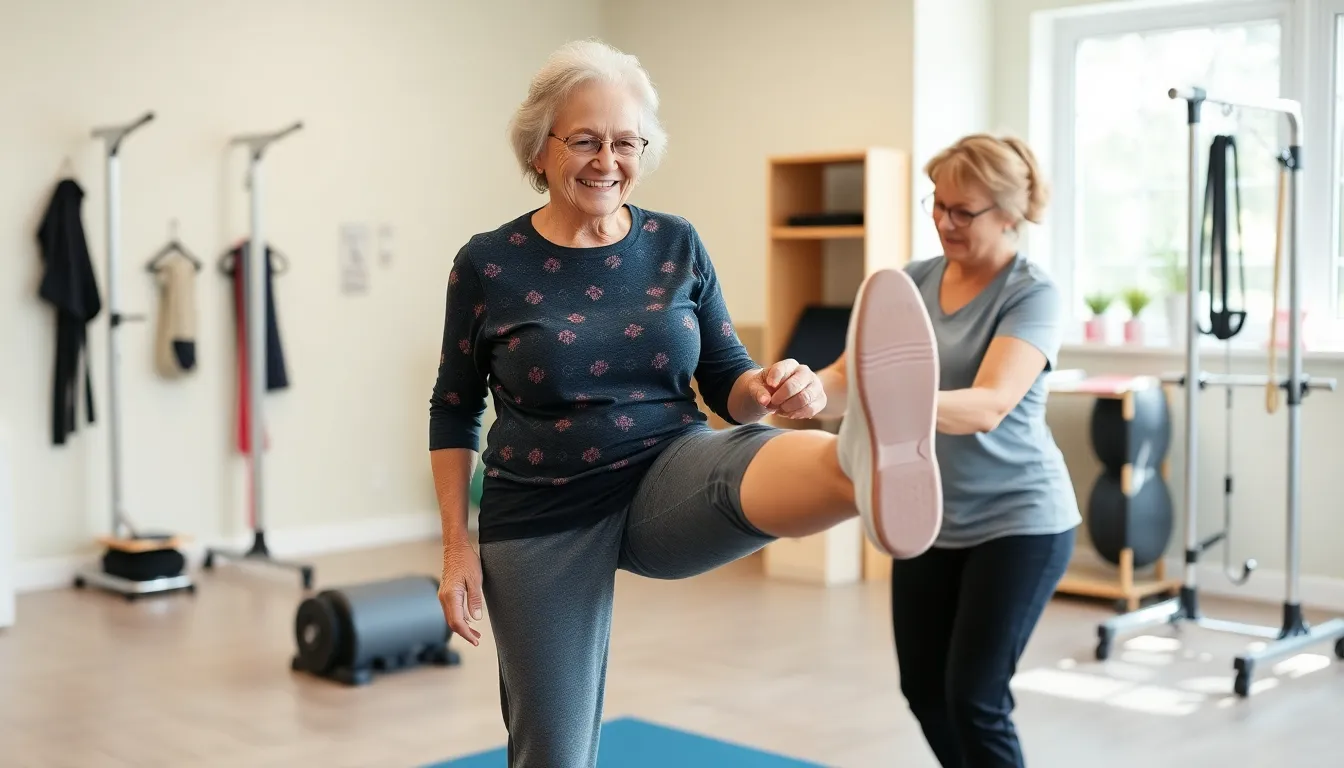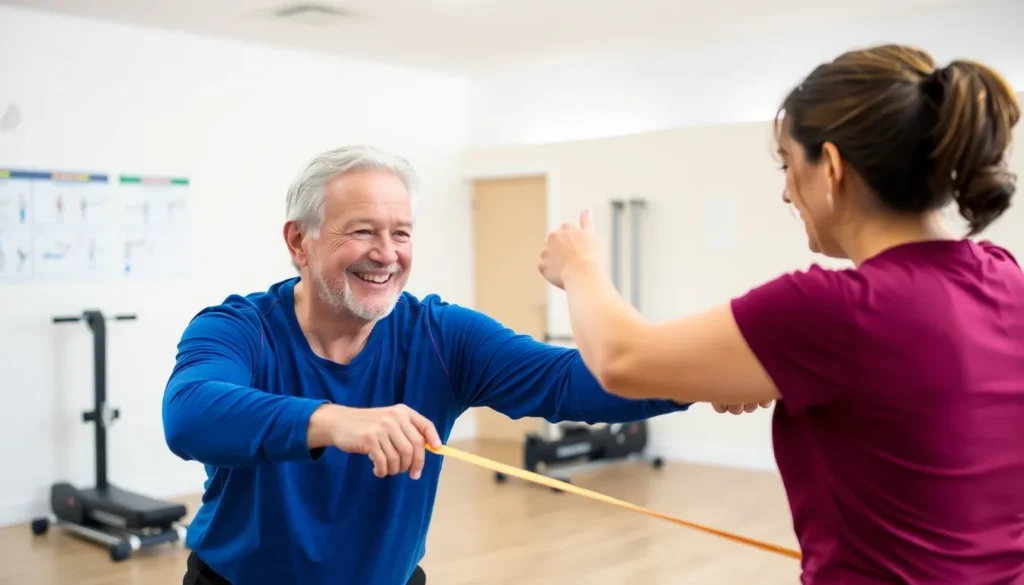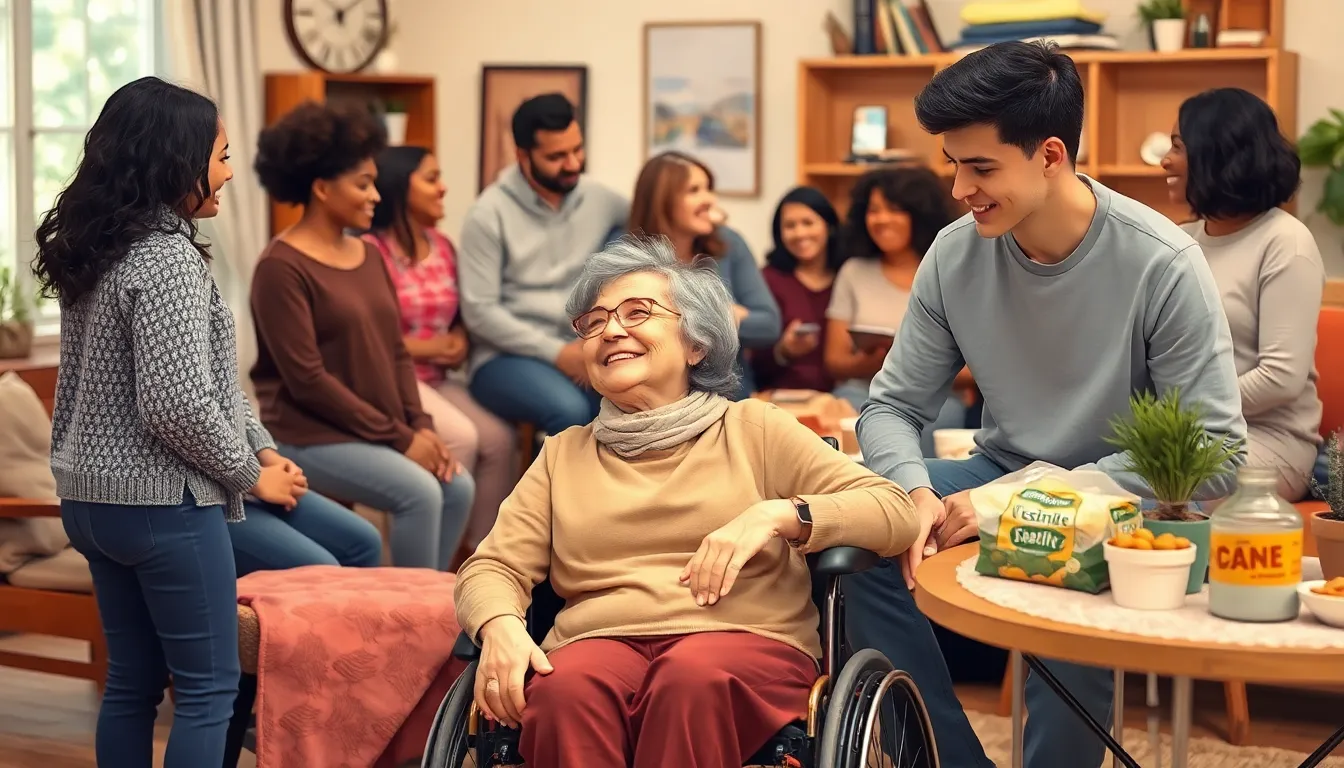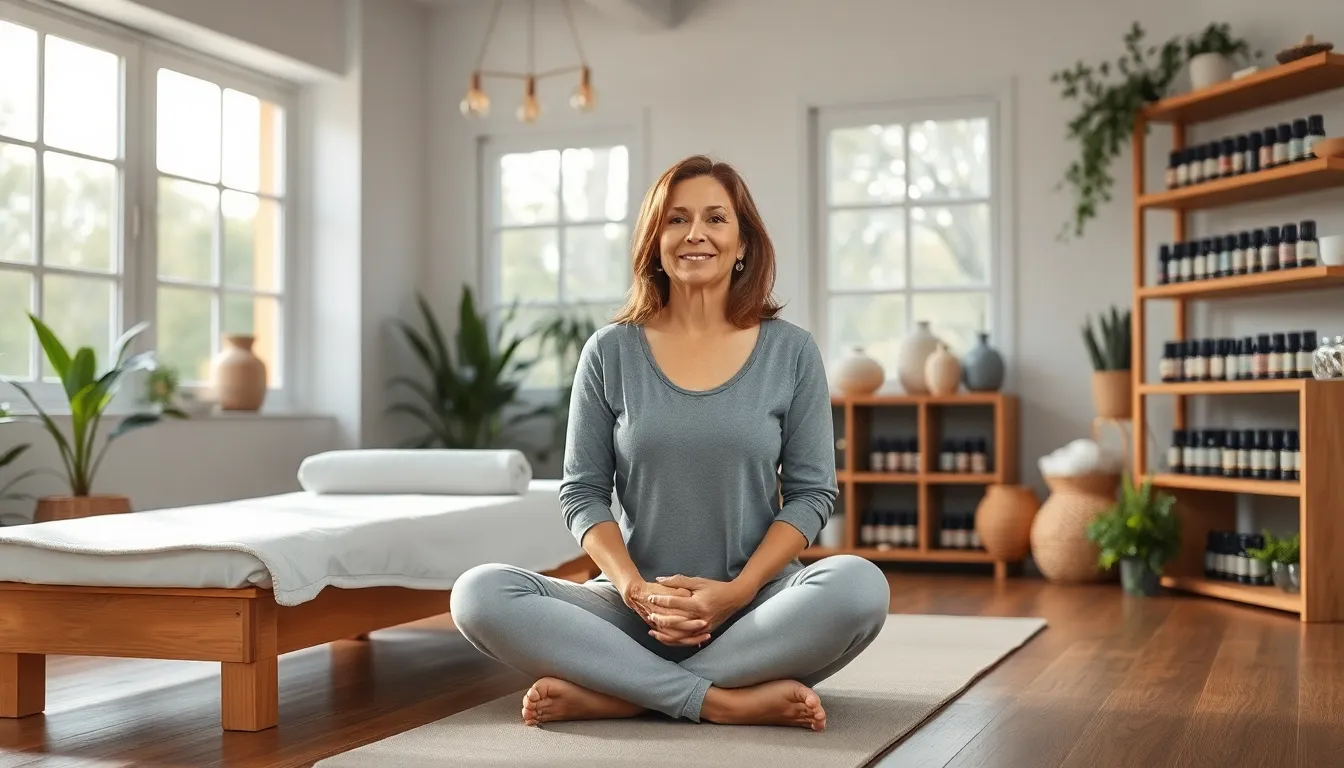Table of Contents
ToggleAging isn’t for the faint of heart, but it doesn’t have to feel like a never-ending game of “Guess That Ailment.” Enter geriatrics physical therapy, the superhero cape for seniors navigating the ups and downs of getting older. With a sprinkle of humor and a dash of expertise, this specialized therapy aims to keep those golden years full of vitality and movement, not just rocking chairs and bingo.
Understanding Geriatrics Physical Therapy
Geriatrics physical therapy focuses on helping seniors improve their physical well-being and quality of life. This specialized therapy addresses the unique challenges faced by elderly individuals, facilitating the maintenance of their mobility and independence.
Definition of Geriatrics Physical Therapy
Geriatrics physical therapy involves tailored interventions that enhance physical function. Its goal is to alleviate age-related conditions such as arthritis, osteoporosis, and balance disorders. Therapists assess individual needs, developing personalized plans that often include exercises, manual therapy, and education on safe movement techniques. These strategies promote strength, flexibility, and coordination, enabling seniors to maintain an active lifestyle.
Importance in Elderly Care
This type of therapy plays a crucial role in elderly care. It not only helps manage chronic conditions but also prevents the onset of new health issues. Engaging in physical therapy can significantly reduce fall risk, enhance balance, and improve cardiovascular health. Additionally, personalized therapy sessions foster social interaction and emotional support, positively impacting mental health. Through these efforts, geriatrics physical therapy contributes significantly to overall well-being for older adults.
Common Conditions Treated

Geriatrics physical therapy effectively addresses various health concerns commonly experienced by seniors.
Arthritis and Joint Pain
Arthritis often leads to chronic joint pain, impacting daily activities. Physical therapists develop customized exercise programs to improve strength and flexibility. With proper techniques, patients can reduce stiffness and enhance range of motion. Regular sessions provide education on joint protection strategies, making movement easier and less painful. Evidence shows that continued physical activity significantly benefits overall joint health for elderly individuals.
Balance and Mobility Issues
Balance issues frequently result in falls, posing serious health risks for older adults. Therapists assess each individual’s stability and create targeted exercises to enhance coordination. Incorporating balance training not only improves physical stability but also boosts confidence. Specialized equipment may be utilized to ensure safety during sessions. Consistency in therapy fosters better mobility, encouraging seniors to engage in their preferred activities.
Stroke Rehabilitation
Stroke survivors face numerous challenges, including mobility and coordination difficulties. Rehabilitation aims to restore function and independence through tailored therapeutic interventions. Focused exercises help rebuild strength in affected areas, promoting neural recovery. Geriatric physical therapists utilize adaptive strategies to facilitate safe movement. Progress monitoring allows for incremental adjustments, ensuring each patient’s rehabilitation program remains effective.
Benefits of Geriatrics Physical Therapy
Geriatrics physical therapy offers significant advantages for seniors, enhancing various aspects of their daily lives.
Improved Mobility and Function
Improved mobility becomes achievable through tailored physical therapy programs. Therapists assess each senior’s specific needs, creating exercise regimens designed to increase strength and flexibility. These individualized plans often include targeted workouts that help address muscle weakness and stiffness from conditions like arthritis. Patients experience noticeable gains in movement, allowing them to perform daily activities with greater ease. Enhanced function contributes to increased independence, helping seniors maintain active lifestyles well into their later years.
Pain Management Strategies
Pain management strategies play a crucial role in geriatrics physical therapy. Therapists employ manual techniques alongside therapeutic exercises to alleviate discomfort associated with chronic conditions. Approaches such as joint mobilization and soft tissue release effectively target pain points, enhancing overall comfort. Furthermore, education on proper body mechanics helps seniors engage in activities safely, reducing the risk of exacerbating existing pain. These strategies empower individuals to manage their pain proactively, improving their overall quality of life.
Enhanced Quality of Life
Enhanced quality of life directly correlates with the benefits provided by geriatrics physical therapy. Improved mobility and pain management lead to increased participation in social activities, fostering deeper connections with family and friends. Mental health benefits also arise from engaging in regular physical activity, boosting mood and reducing feelings of isolation. As seniors regain confidence in their abilities, they often notice newfound joy in their daily routines. This holistic approach ensures that physical, emotional, and social well-being are prioritized throughout the therapy process.
Techniques and Approaches
Geriatrics physical therapy employs various techniques to enhance physical function and overall well-being in seniors. These strategies include exercise programs, manual therapy, and the use of assistive devices.
Exercise Programs
Structured exercise programs focus on improving strength, flexibility, and balance. Personalized routines target age-related conditions like arthritis and osteoporosis. Tailored exercises may include resistance training, stretching, and aerobic activities. Emphasis on safety and proper form prevents injuries. Moreover, consistent participation promotes independence and boosts confidence in performing daily activities.
Manual Therapy
Manual therapy techniques aim to alleviate pain and improve mobility. Therapists use hands-on methods to manipulate soft tissues, joints, and muscles. This treatment can reduce stiffness and enhance range of motion. Techniques often include massage, mobilization, and stretching. As a result, manual therapy improves blood circulation and supports faster recovery from injuries.
Assistive Devices
Assistive devices play a crucial role in enhancing mobility and safety for seniors. Common tools include walkers, canes, and grab bars. These devices provide stability and support, allowing seniors to move confidently. Education on safe usage is essential for preventing falls. Additionally, personalized recommendations for specific devices ensure seniors maintain independence in their daily lives.
Geriatrics physical therapy stands out as a transformative approach for seniors navigating the complexities of aging. By focusing on individual needs and providing tailored interventions, it empowers older adults to reclaim their independence and enhance their quality of life. With effective pain management and improved mobility, seniors can engage more fully in activities they enjoy.
This specialized therapy not only addresses physical challenges but also fosters emotional well-being through social interaction and support. As the aging population continues to grow, the importance of geriatrics physical therapy in promoting holistic health and vitality cannot be overstated. Embracing these therapeutic options allows seniors to age with grace and confidence.



